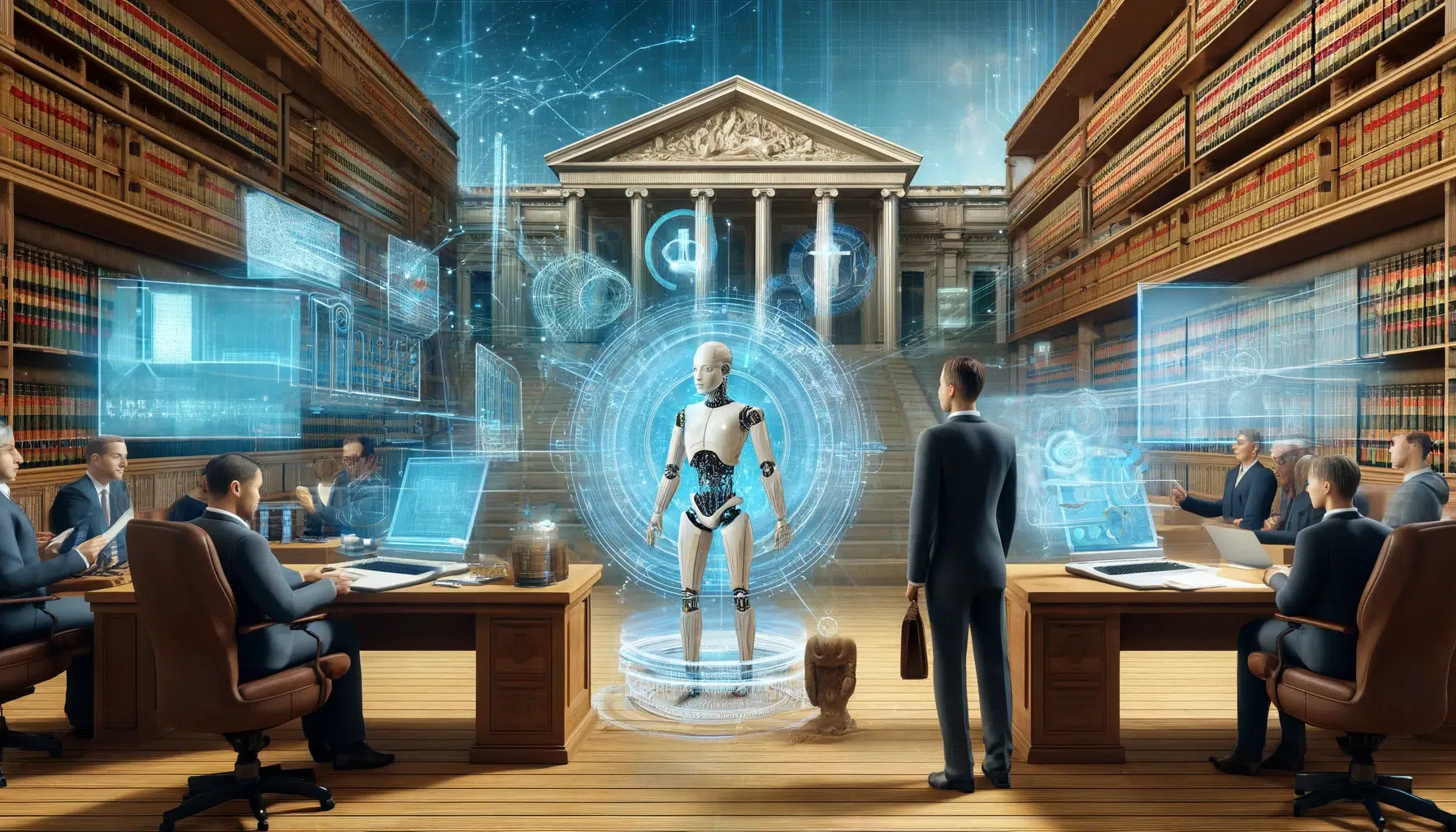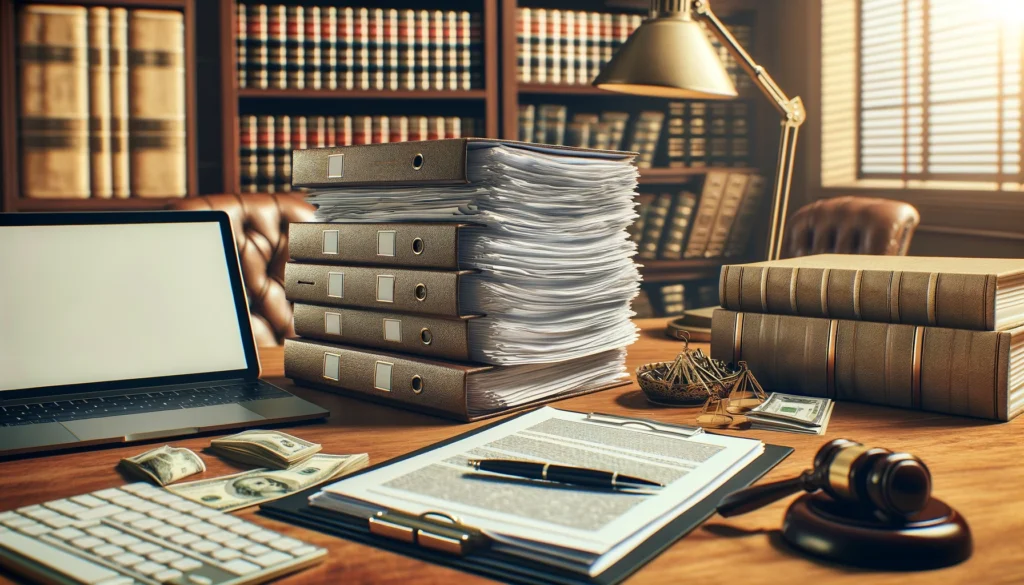
Introduction
In the fast-paced world of personal injury law, paralegals are the backbone that keeps the practice running smoothly. They juggle client communication, case management, and endless documentation—all of which demand precision, empathy, and efficiency. With the advent of technologies like ChatGPT and other large language models (LLMs), there’s a new opportunity on the horizon to streamline these intricate tasks, transforming challenges into efficiencies.
The potential of LLMs in enhancing client communication and case management is vast but requires a nuanced understanding and strategic implementation to fully harness. This article aims to unfold the layers of leveraging ChatGPT and similar technologies, providing paralegals with practical, creative prompts, and techniques. These strategies are designed not just to speed up their day-to-day work but to elevate the quality of client service and case outcomes.
As we delve deeper into the mechanics and applications of these tools, we’ll explore how they can be adapted to the unique demands of personal injury practices. From drafting sensitive client communications to organizing case files, the promise of LLMs in legal settings is both exciting and revolutionary.
In the next section, we’ll lay the groundwork by understanding ChatGPT and LLMs in the context of legal settings— their capabilities, benefits, and the ethical considerations that come into play when integrating artificial intelligence into law practice. This foundation is crucial for paralegals looking to innovate while upholding the high standards of their profession.
Understanding ChatGPT and LLMs in Legal Settings
Building on the premise that ChatGPT and other large language models (LLMs) hold transformative potential for personal injury practices, it’s imperative to dissect what these technologies entail and their fit within the legal landscape. The integration of such advanced tools promises not only to refine the efficiency of paralegals but also to redefine the contours of client communication and case management in legal settings.
What Are ChatGPT and LLMs?
- ChatGPT and similar LLMs are artificial intelligence programs developed by training on vast datasets of text. They can generate human-like text based on the prompts they receive.
- These models can perform a variety of tasks, from drafting emails to summarizing legal documents, making them versatile tools in a legal professional’s arsenal.
Benefits and Limitations
- Benefits: Efficiency in document drafting, potential for enhanced client communication, and a tool for brainstorming legal strategies.
- Limitations: Despite their advanced capabilities, LLMs lack the ability to understand context or the nuances of law to the extent a human legal professional does. They must be used with caution, especially regarding accuracy, ethical use, and confidentiality.
Ethical Considerations and Confidentiality
- The use of LLMs raises important ethical questions, particularly concerning client confidentiality and the accuracy of the information provided. Paralegals and attorneys must ensure that the use of such technology adheres to legal ethical standards.
- Ensuring data processed through LLMs is secure and does not violate client confidentiality is paramount. This involves being selective about the information shared with these tools and understanding the security measures in place by the providers.
Understanding and leveraging ChatGPT and LLMs effectively in legal practices require not only a technical grasp of these tools but also a nuanced understanding of their limitations and ethical implications. As paralegals navigate through these considerations, the potential for these technologies to streamline workflows and enhance client service becomes increasingly apparent.
Moving forward, the next section will delve into the core of leveraging these technologies—Developing Effective Prompts for Client Communication. Here, we will explore how paralegals can craft prompts that maximize the utility of LLMs for client interactions, ensuring that communications are both efficient and empathetically attuned to the clients’ needs.
Developing Effective Prompts for Client Communication
With a solid understanding of the capabilities and ethical landscape surrounding ChatGPT and LLMs, paralegals are poised to unlock their potential in one of the most critical aspects of legal practice: client communication. Effective communication forms the backbone of client trust and satisfaction, making it paramount for paralegals to master. Utilizing LLMs can significantly enhance this facet of their work, provided they use carefully crafted prompts that generate clear, empathetic, and accurate responses.
Crafting Prompts for Initial Client Interviews
- Start with detailed, open-ended questions that encourage comprehensive responses. For example, prompts could be structured to elicit the client’s full account of an incident, ensuring all relevant details are captured.
- Use prompts that guide the LLM to generate questions covering all necessary legal aspects without making the client feel overwhelmed.
Follow-up Communications
- For follow-ups, craft prompts that succinctly summarize previous interactions and politely inquire about any updates, further information, or documents that might be needed.
- Implement prompts that help draft empathetic responses, acknowledging the client’s situation and the progress of their case.
Managing Client Expectations
- Use LLMs to draft communications that clearly explain legal processes, timelines, and potential outcomes in layman’s terms. This demystifies legal jargon and helps manage expectations.
- Create prompts that guide the model to offer support and reassurance, reinforcing the commitment to the client’s case.
Strategies for Refining Prompts
- Feedback Loop: Incorporate client feedback into refining prompts, ensuring communications are continually optimized for clarity, tone, and effectiveness.
- Iterative Testing: Test different prompt structures to determine which yield the most useful responses for various communication needs.
As paralegals adeptly navigate through crafting these nuanced prompts, they not only enhance the efficiency of their work but also significantly improve the client’s experience and satisfaction. The ability to generate personalized, legally sound, and empathetic communications at scale stands to revolutionize client interactions in personal injury practices.
Transitioning from effective client communication to internal efficiencies, the next section will explore how LLMs can be similarly leveraged for Streamlining Case Management and Documentation. This shift from external to internal processes highlights the holistic impact that thoughtful implementation of LLMs can have on a personal injury practice, further enhancing the paralegal’s role as a pivotal element in the legal team’s success.
Streamlining Case Management and Documentation
Having established how ChatGPT and LLMs can revolutionize client communication through thoughtful prompt engineering, it’s equally crucial to address their transformative potential in the realms of case management and documentation. The meticulous organization of case files, adherence to deadlines, and preparation of legal documents are foundational to the success of personal injury practices. Here, LLMs can serve as invaluable allies, streamlining workflows and reducing the manual burden on paralegals.
Summarizing Case Details
- Utilize LLMs to create comprehensive summaries of case files. For instance, prompts can be structured to extract key information from a series of documents, synthesizing them into concise summaries.
- Example Prompt: “Summarize the key facts, legal issues, and current status of [Case Name] based on the provided documents.”
- Template: A structured template might include headings for Facts, Legal Issues, Current Status, and Next Steps, guiding the LLM to organize the summary effectively.
Tracking Deadlines and Organizing Documentation
- LLMs can be programmed to assist in deadline management. By inputting case timelines and critical dates, paralegals can generate prompts that request the LLM to create a schedule of upcoming deadlines.
- Example Prompt: “Based on the provided timeline, list all upcoming deadlines for [Case Name] in chronological order, including a brief description of each task.”
- Template: A calendar format, with dates, descriptions, and prioritization (e.g., High, Medium, Low) for each task.
Preparing Standard Legal Documents
- With the right prompts, LLMs can draft initial versions of standard legal documents, which can then be reviewed and finalized by attorneys. This is particularly useful for routine filings, client letters, and internal memos.
- Example Prompt: “Draft a demand letter for [Case Name] that includes [specific requirements], based on the standard template.”
- Template: Templates for demand letters, discovery requests, and other common documents can be standardized, with placeholders for case-specific information.
Cross-Checking LLM Outputs
- Despite their utility, it’s crucial to cross-check all LLM-generated documents against legal standards and requirements. This ensures accuracy and compliance with legal protocols.
- Example Strategy: Implement a checklist for reviewing LLM outputs, focusing on legal accuracy, client confidentiality, and adherence to firm-specific document standards.
By integrating ChatGPT and other LLMs into case management and documentation processes, paralegals can significantly enhance their efficiency and reliability. This not only accelerates routine tasks but also allows paralegals to allocate more time to complex, high-value aspects of their work.
As we pivot from the intricacies of case management to broader client relationship management (CRM) strategies, the subsequent section will explore how automation and personalized communication fostered by LLMs can elevate client experiences and satisfaction. This shift underscores the holistic benefits of LLM adoption, from internal efficiencies to enhanced client engagement, illustrating the comprehensive impact these technologies can have on personal injury practices.
Enhancing Client Relationship Management (CRM) Through Automation
Transitioning from the meticulous organization of case management and documentation, the focus now shifts towards optimizing client relationship management (CRM) strategies through automation. The personal touch in client interactions, critical for building trust and satisfaction, can be significantly augmented by the strategic use of ChatGPT and other large language models (LLMs). By automating routine communications and personalizing client interactions, paralegals can enhance the client experience, ensuring clients feel valued and informed throughout their legal journey.
Automating Routine Client Updates
- Automation can be employed to send regular updates on case progress, reminders for appointments, or documentation submission requests. By crafting specific prompts, LLMs can generate personalized messages that keep clients informed and engaged.
- Example Prompt: “Generate a monthly update email for [Client Name] regarding the status of [Case Name], highlighting recent developments and next steps.”
- Template: Include sections for Case Summary, Recent Developments, Next Steps, and Contact Information for questions.
Scheduling and Feedback Collection
- Integrating LLMs with CRM systems can streamline appointment scheduling and feedback collection processes. This not only saves time but also improves the responsiveness of the practice to client needs and concerns.
- Example Prompt for Scheduling: “Draft an email to [Client Name] proposing three appointment times for the next case review meeting, and include a link to the scheduling tool.”
- Example Prompt for Feedback: “Create a follow-up message for [Client Name] after their case closure, inviting them to provide feedback on their experience with our services.”
Personalizing Client Interactions
- The capability of LLMs to tailor communications based on client history and preferences adds a layer of personalization that can significantly boost client satisfaction.
- Example Prompt: “Based on [Client Name]’s communication preferences and case history, draft a congratulatory message for a recent case milestone, incorporating a personal touch.”
Strategies for Enhancing CRM Through LLMs
- Segmentation: Use LLMs to segment clients based on case type, communication preferences, or stage in the legal process, allowing for more targeted and relevant communications.
- Proactive Engagement: Employ prompts that enable the LLM to draft proactive check-in messages, offering assistance or resources related to the client’s case or interests.
By harnessing the power of automation and personalized communication through LLMs, paralegals can transform the CRM landscape in personal injury practices. This approach not only streamlines administrative tasks but also elevates the quality of client care, fostering stronger relationships and enhancing client loyalty.
Concluding this exploration of leveraging LLMs in personal injury practices, the final section will reflect on the broader implications of these technologies. It will underscore the importance of ethical considerations, the necessity of human oversight, and the ongoing evolution of legal practice through innovation. This concluding discussion will wrap up our comprehensive guide, emphasizing the sustainable integration of LLMs in enhancing both efficiency and client service in the legal sector.
Conclusion and Ethical Considerations
As we conclude our exploration into leveraging ChatGPT and other large language models (LLMs) within personal injury practices, it’s clear that these technologies offer remarkable opportunities for streamlining client communication, case management, and documentation processes. By automating routine tasks and personalizing client interactions, paralegals can significantly enhance operational efficiency and client satisfaction. However, the integration of these advanced tools into legal workflows is not without its challenges and responsibilities.
Ethical Considerations and the Importance of Human Oversight
- The use of LLMs in legal settings raises important ethical considerations, particularly regarding client confidentiality, data security, and the accuracy of legal information. It’s imperative that legal professionals remain vigilant, ensuring that the deployment of these technologies aligns with the highest ethical standards of the profession.
- Human oversight remains crucial. While LLMs can augment the capabilities of legal staff, the nuanced judgment and expertise of legal professionals are irreplaceable. Paralegals and attorneys must critically review all LLM-generated content to ensure its accuracy, appropriateness, and compliance with legal standards.
Looking Forward
- As legal practices continue to evolve with technological advancements, the role of LLMs in the legal sector is set to expand. The ongoing development of these technologies, coupled with a deepening understanding of their potential and limitations, promises to further transform legal workflows and client service paradigms.
- Embracing these technologies, while navigating their ethical implications with care and consideration, will be key to unlocking their full potential in enhancing the delivery of legal services.
The journey of integrating ChatGPT and LLMs into personal injury practices is just beginning. With thoughtful implementation and a commitment to ethical practice, these tools can serve as powerful allies in the quest to streamline operations, improve client communication, and ultimately, deliver superior legal services. As we move forward, the legal community must continue to engage with these technologies critically, ensuring that they serve the best interests of clients and the integrity of the legal profession.


